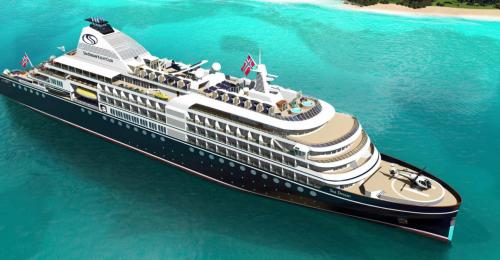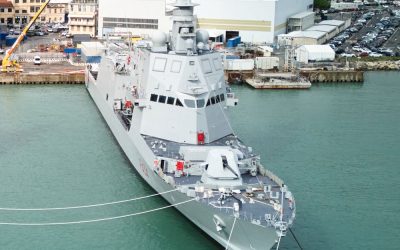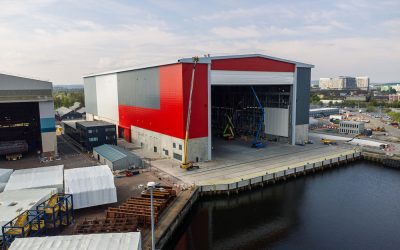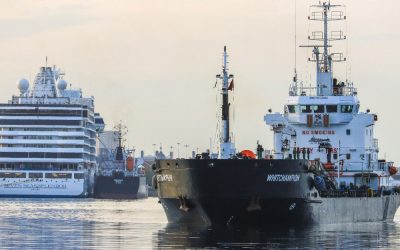Following the entry into force of the IMO’s Polar Code a few years ago, there has been a surge in orders for expedition cruise ships and cruise yachts. Many of these cater for the very top end of the cruise market and – even externally – bear a strong resemblance to large, private mega yachts.
In early 2019, Netherlands-headquartered Damen Group said that it had signed a preliminary contract with Sea Dream to build a 15,600gt cruise yacht for the Norwegian company. This would be much larger than the two 104m, 4,200gt vessels Sea Dream currently operates. However, just before the end of that year, the parties announced they had decided to cancel.
Damen is a well-known builder of megayachts, but Mark Vermeulen, director of its mid-sized vessel division, says a return to cruise ships equivalent to the cancelled Sea Dream project is not on the agenda for now.
“The cruise market – Sea Dream-like vessels – is not our focus area at the moment, given the market situation. An interesting market is the one between charter yachts and small cruise vessels. Vessels of max 36 passengers that you can charter as a vessel or per cabin,” he tells The Naval Architect.
There are synergies between the construction of expedition cruise ships and cruise yachts on one hand and megayachts on the other, for example in the logistics and spaces, capabilities, functionalities and services onboard.
However, the commercial approach is completely different. “Small cruise vessels are very much capex and opex driven to be able to get a return on investment. A yacht is much more driven by emotion. It is the dream of the owner. For the smaller cruise vessels the big challenge is to find the right balance between functionality and the finish, against the available budget – or the maximum foreseen charter rate,” Vermeulen says.
The synergies are why Helsinki Shipyard is interested in expanding its product range from small cruise ships to megayachts.
“Megayachts are often in the 100-120m range in terms of length, which is the same as the expedition cruise ships we are building at the moment. There are also lots of communalities in e.g. the crew and technical areas of both ship types,” says Carl-Gustaf Rotkirch, board member of the Finnish shipbuilder.
Finland is well established as a builder of cruise ships and also of large sailing yachts, but megayachts are currently missing from the list, he adds. However, Helsinki Shipyard has a network of suppliers and contractors which are currently working on three expedition cruise liners that will be operated by Swan Hellenic and which could also work on megayacht projects.
There is a significant difference in how an expedition cruise ship and a megayacht project proceed. “Timetable of construction is not always nearly
as important in a megayacht project as it is in a commercial project, such as an expedition cruise ship,” Rotkirch explains.
As a shipyard cannot tie up its facilities for long periods with one vessel, it is important that the fitting out of a megayacht can be carried out at a berth that does not hinder other production at the yard, he continues.
On the other hand, a cruise ship builder like Helsinki Shipyard could offer a potential megayacht client a shorter than usual delivery time, as working on tight schedules is the norm in commercial shipbuilding.
“There seem to be two types of megayacht owners. Some want the vessel built as quickly as possible. They also often sell the vessel soon after completion and order another one. Others view these projects as highly personal and dedicate a lot of time to ensure that the vessel meets their expectations in great detail,” Rotkirch points out.
In commercial ships, expedition cruise vessels included, both capital and operating expenditure of the vessel
is high on the agenda and a way to reduce the first named is to order a series of sister ships. This is not the case on the megayacht sector, although some builders with a strong balance sheet build hulls on speculation.
These can then be sold and fitted out to the requirements of the buyer. This approach allows the yard to offer a shorter delivery time and it also means that the more capital expensive fitting out stage of the project is only carried out once there is a client who
is paying for it. “Money does talk in the mega yacht business as well,” Rotkirch notes.
The market for megayachts of more than 100m in length has remained vibrant in recent years, with about half a dozen such vessels delivered each year. They mainly come from builders in Germany, the Netherlands and Italy, Rotkirch says.






